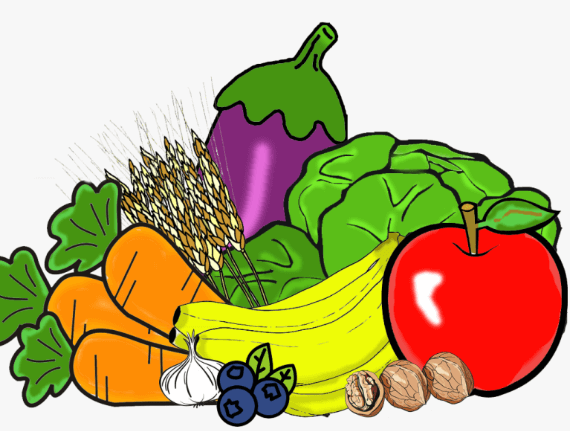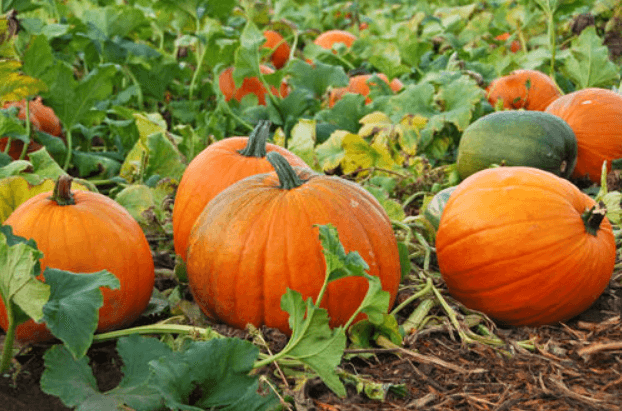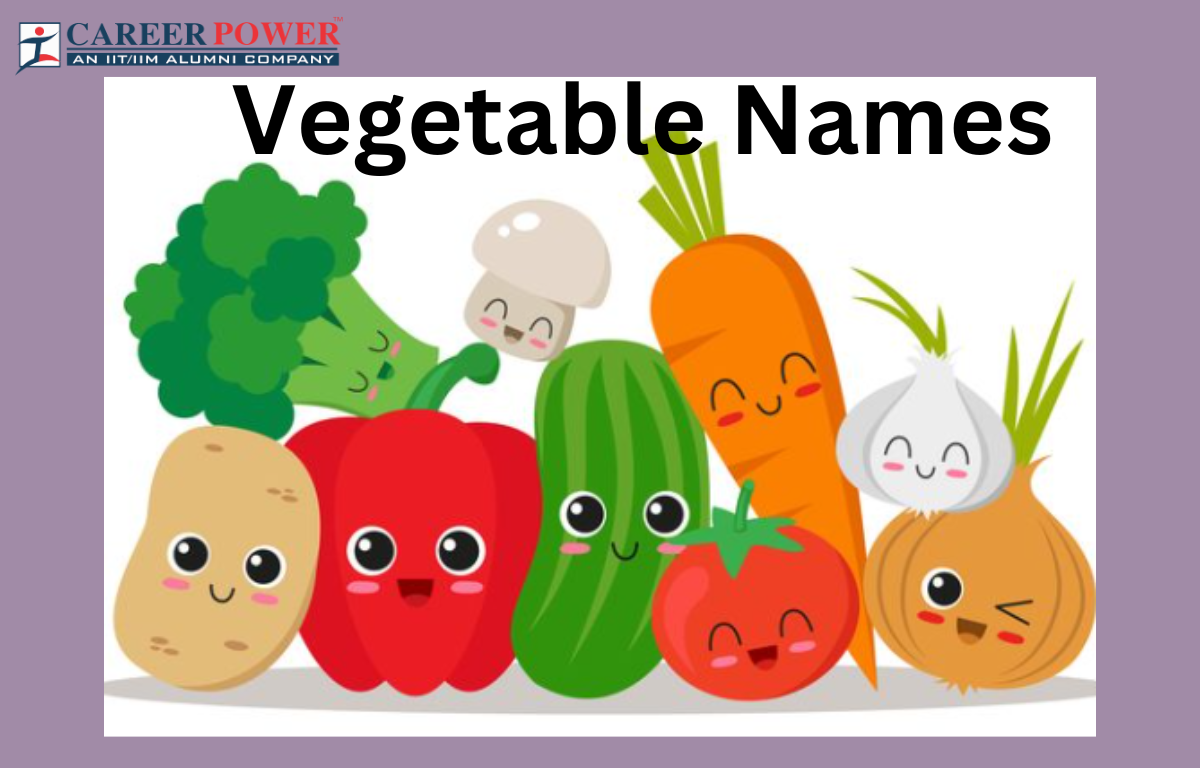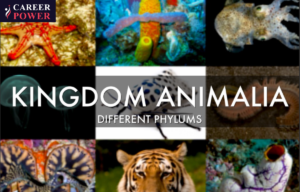Vegetables and fruits are essential for our overall well-being due to their rich nutrient content. They are colorful and tasty foods that help us grow strong and healthy. They come in many different shapes and sizes, like crunchy carrots, juicy tomatoes, and leafy spinach. Eating vegetables gives us vitamins and minerals, aiding in weight management and maintaining a healthy Digestive System. Some vegetables, like peas and corn, are sweet, while others, like broccoli and cucumbers, are crunchy and fun to eat. You can enjoy vegetables in salads, soups, or even snacks. So eat a rainbow of vegetables every day and stay happy and healthy! Here we have discussed a few names of vegetables in both Hindi and English.
Vegetable Name
Friends, we all eat vegetables, and it’s unusual to find someone who doesn’t. Vegetables are a key part of our diet and are great for our health. They come in many types and are grown all over the world. While we might know the names of some vegetables, there are many others we might not recognize. This is because some vegetables are only found in specific regions or countries, while others can be found everywhere. The variety of vegetables is vast, and learning about different ones can be interesting and beneficial.

The vegetable names must be taught in the beginning, especially to young students in the first and second grades, so that they can have a basic understanding of vegetable names (sabjiyon ke naam). So, today we are covering different vegetable names for students to help them learn all the names.
Vegetable Names in English
Below we have discussed a few most common vegetable names:
- Carrot
- Broccoli
- Spinach
- Tomatoes
- Potato
- Onion
- Bell Pepper
- Cucumber
- Lettuce
- Cauliflower
- Zucchini
- Pea
- Garlic
- Bottle Gourd
- Bitter Gourd
Color Wise Names Vegetables in English
Vegetables come in different colors, and each color has its own benefits. Green vegetables like spinach and broccoli are rich in vitamins and make us strong. Red vegetables like tomatoes and red bell peppers are good for the heart. Orange vegetables like carrots and pumpkins help improve eyesight. Yellow vegetables like corn and squash give energy. Purple vegetables like brinjal and beetroot are good for the brain. Eating a mix of colorful vegetables keeps us healthy and strong.
| Color Wise Name Vegetables in English | |
| Colors | Names of Vegetables |
| Red Vegetable | Tomato, Red Bell Pepper, Beetroot, Red Cabbage, Radish, Red Chili |
| Orange Vegetables | Carrot, Pumpkin, Sweet Potato, Orange Bell Pepper, |
| Yellow Vegetables | Corn, Yellow Bell Pepper, Yellow Squash |
| Green Vegetables | Spinach, Broccoli, Cabbage, Green Beans, Cucumber, Green Bell Pepper, Zucchini |
| Purple Vegetables | Eggplant (Brinjal), Purple Cabbage, Purple Carrot |
| White Vegetables | Cauliflower, Garlic, Onion, Mushroom |
50 Vegetable Names in English
Here is a list of 50 vegetable names written in a table in English. It is useful for students, beginners, or anyone who wants to improve their vocabulary. You can use this for daily practice or while shopping. It’s a fun and simple way to remember vegetable names in everyday life.
| Vegetable Names in English | |
| English | Baby corn |
| Tomato | Cluster beans |
| Bottle Gourd | Amaranth leaves |
| Potato | Yam |
| Pea | Ash gourd |
| Green Chili | Spine gourd |
| Cucumber | Red chili |
| Onion | Chickpea |
| Cauliflower | Lotus cucumber |
| Bitter Gourd | Runner beans |
| Pointed Gourd | Elephant foot yam |
| Cabbage | Cassava |
| Beat-root | Chives |
| Bean | Ceylon spinach |
| Jack-fruit | Raw banana flower |
| Ridge Gourd | Bamboo shoot |
| Sponge Gourd | Taro root |
| Ginger | Cape gooseberry |
| Capsicum | Amaranth |
| Pumpkin | Arugula |
| Brinjal | Fennel |
| Spinach | Fenugreek leaf |
| Coriander Leaf | Jute Flower |
| Round Melon | Lady-Finger |
| Colocasia Root | Kideny beans |
| Turnips | Drumstick |
| Mushroom | Tendli Gourd |
| Garlic | White Brinjal |
| Sweet-Potato | Curry leaves |
| Green Onion | Tamarind |
| Dill | Raw papaya |
| Radish | Olive |
| Mint | Natal plum |
| Soya beans | Keri |
| Green-Mustard | Fava beans |
| Wild Spinach | French beans |
सब्जियों के नाम हिंदी में
| सब्जियों के नाम हिंदी में | |
| टमाटर | सेम की फली |
| लौकी | जिमीकंद |
| आलू | कसावा |
| मटर | प्याज का पत्ता |
| हरी मिर्च | पोई |
| खीरा | कच्चे केले का फूल |
| प्याज | बांस के कोपले |
| फूल गोभी | कान्दू |
| करेला | केप करौंदा |
| परवल | अम्लान पुष्प |
| बंद गोभी | आर्गुला |
| चुकंदर | सौंफ |
| सेम | मेथी |
| कटहल | सनैल का फूल |
| तरोई | भिन्डी |
| नेनुआ (घेवडा) | इमली |
| अदरक | कच्चा पपीता |
| शिमला मीर्च | जैतुन |
| कद्दू | करौंदा |
| बैगन | कच्चा आम/ अमिया |
| पालक | मक्का |
| धनिया पत्ता | ग्वार की फली |
| टिंडा | चौराई |
| अरवी | रतालु |
| शलजम | पेठा |
| मशरूम | ककोर |
| लहसून | लाल मिर्च |
| शकरकंद (गंजी) | काबुली चना |
| हरा प्याज | कमल ककड़ी |
| सोया | फ्रेंच बीन्स |
| मूली | राजमा |
| पुदीना | सहजन |
| सोयाबीन | कुदरुन |
| हरा सरसों | सफेद बैगन |
| जंगली पालक | करी पत्ता |
| बाकला | |
What is the National Vegetable of India?
The Pumpkin is the national vegetable of India. This humble vegetable, known as “Kaddu” in Hindi, holds cultural significance and is a staple in Indian cuisine. Its vibrant orange color reflects the diversity and richness of the country. Pumpkins are not only tasty but also nutritious, offering a good dose of vitamins and minerals. In Indian households, various delicious dishes like pumpkin curry, soup, and sweets are prepared, showcasing the versatility of this vegetable.

Name the King of Vegetables
The brinjal, also known as eggplant or Bagan, is often called the “king of vegetables.” It is a shiny purple vegetable that grows on a plant with big green leaves. It is soft inside and loved for its tasty flavor. People enjoy cooking it in many ways like frying, roasting, baking, or making curries. Brinjal is not just delicious but also healthy, as it is full of vitamins and fiber. It helps keep the body strong and fit. This vegetable is used in many kitchens around the world, making it a favorite in many homes. Brinjal is both yummy and good for your health!
Different Types of Vegetables
Vegetables are healthy and give us energy. There are many types of vegetables. Leafy vegetables like spinach and cabbage are green and full of vitamins. Root vegetables like carrots, potatoes, and radishes grow under the ground. Some vegetables like tomatoes, brinjals, and cucumbers grow above the ground. Beans, peas, and ladyfingers are also tasty vegetables. Vegetables help us stay strong and fight diseases. We should eat different kinds of vegetables every day. They can be cooked, boiled, or eaten raw in salads. Fresh vegetables are good for health. Everyone, especially children, should eat more vegetables to stay fit and active.
| Different Types of Vegetables | |
| Types of Vegetables | Examples |
| Flower vegetables | Cauliflower, Broccoli, Artichoke |
| Leafy vegetables | Spinach, Lettuce, Cabbage. |
| Root vegetables | Carrot, Beetroot, Radish |
| Tuber vegetables | Potato, Sweet Potato, Yam |
| Fruit vegetables | Tomato, Brinjal (eggplant), Bell pepper |
| Bulb vegetables | Onion, Garlic, Leek |
| Stem vegetables | Asparagus, Celery, Sugarcane |
Names Of Vegetables with their Description
Some more examples of vegetables have been tabulated below:
| Some Common Vegetables with Their Description | |
| Name of Vegetables | Description |
| Brussels Sprouts | belong to the family of cabbage and are green edible buds. They are high in fiber and antioxidants. |
| Drumsticks | are pod vegetables and are commonly found in India. It is one of those vegetables that can be consumed whole as well as its seeds, leaves, and stems. They are rich in antioxidants. |
| Beetroot | is a red vegetable and is the taproot portion of the beet plant. It can be used in salads or juices. |
| Asparagus | Asparagus is a plant whose young green shoots are a good source of fiber and vitamins A, K, and C. |
| Bitter Gourd | Bitter gourd, as the name suggests, is a vegetable that tastes quite bitter. It is widely grown in Africa, Asia, and the Caribbean areas. |
| Cauliflower | is a cruciferous vegetable, and the head of the vegetable is consumed. It is a rich source of vitamin B and fiber. |
| Broccoli | Broccoli belongs to the family of cabbage and is an edible flowering plant. It is very low in calories and hence a good choice for those on diets. |
| Carrot | Carrots are orange root vegetables that are commonly consumed all across the world. They are also a good source of vitamin A. |
| Cabbage | Cabbage is a leafy green vegetable that has many layers and is grown annually around the world. This vegetable helps to keep the bad cholesterol under control. |
| Celery | Celery is a vegetable grown in marshlands. It is green in color has a fibrous stalk, and is a rich source of antioxidants. |
Interesting Facts About Vegetables
Some of the interesting facts regarding vegetables have been discussed below:
- Bell Peppers can come in various colors like red, green, yellow, and even purple, each indicating a different stage of ripeness.
- Broccoli is a remarkable vegetable as it is not only rich in vitamins and fiber but also contains more protein per calorie than beef.
- The heaviest cabbage ever recorded weighed around 130 pounds, emphasizing the incredible diversity within the vegetable world.
- Brussels sprouts grow in a spiral pattern along a thick stalk, resembling a mini cabbage tree.
- Spinach has a unique ability to regenerate and produce new leaves after harvesting, making it a resilient and sustainable vegetable.
- The potato is not only a staple food but also a versatile vegetable that can be used to generate electricity due to its high starch content.
- Asparagus can grow up to 10 inches in a single day, making it one of the fastest-growing vegetables.
- The humble sweet potato is not only delicious but also packed with nutrients, including beta-carotene, which gives it a vibrant orange color.



 Food Chain: Definition, Types, Examples,...
Food Chain: Definition, Types, Examples,...
 Human Respiratory System: Definition, Di...
Human Respiratory System: Definition, Di...
 Animal Kingdom: Classifications, Example...
Animal Kingdom: Classifications, Example...













